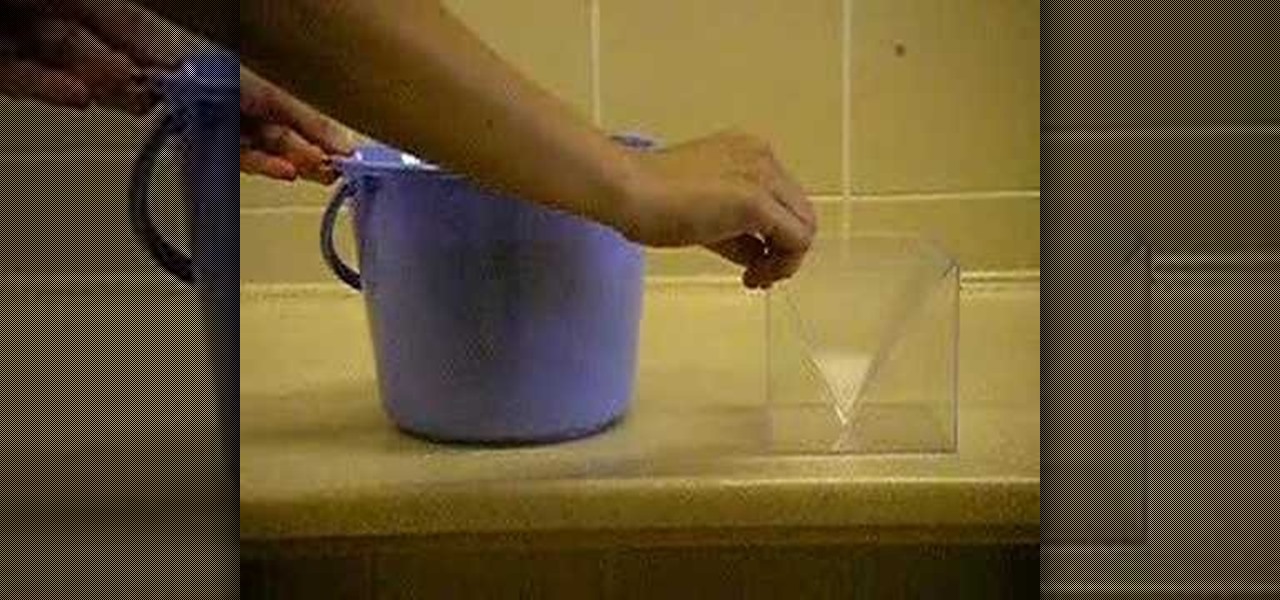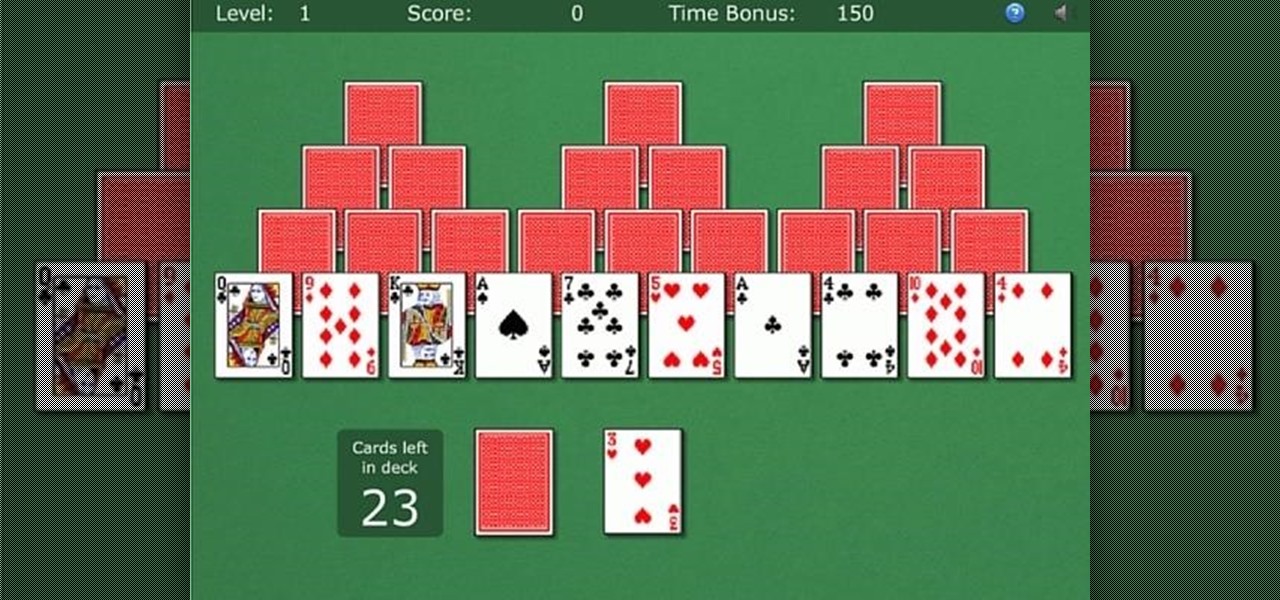
How To: Find the volume of pyramids in geometry
A pyramid is a three-dimensional figure with a polygonal base and a vertex. The base can be a triangle, quadrilateral, pentagon, hexagon, or other type of polygon.


A pyramid is a three-dimensional figure with a polygonal base and a vertex. The base can be a triangle, quadrilateral, pentagon, hexagon, or other type of polygon.

Fashionable things come and go (remember gladiator sandals?), but truly cool things stay around forever. Take pyramids, for instance. Since the Egyptians (well, arguably, the Mesopotamians) invented them more than two thousand years ago, they still fascinate people all around the world, and the Giza pyramids are still one of Egypt's top tourist traps. And songstress Charice recently devoted an entire song to pyramids.

Turn your dining room table into the eighth wonder of the world by shaping your napkins into pyramids. Learn the art of napkin folding, perfect for entertaining guests!

The pyramids aren't the only exotic treats offered by Egypt. Though the country is famous for its towering, almost as high up as the sun pyramid peaks, taking a trip to Egypt will also show you a plentiful variety of exotic foods that are both delicious and healthy.

FK describes how to make a Yoshimoto cube. First, print out the template. Then, trim the paper with scissors along the perimeter and glue the edges into a 3D pyramid. Repeat these steps until you have 48 cubes. Fix 3 pyramids together 16 times. Arrange pyramids in groups. Repeat 2 times and color 8 of the pyramids. Place adhesive on the joints of the cubes. Arrange the pyramid groups into a cube. Now, you can perform neat tricks with the cube, like changing the cube from white to colored with...

Many people ruin a good cigar by a badly placed cut. YouTube user Cigaraficionadovideo is here to help. First in order to understand the cutting mistakes you must first know how a cigar is put together. A hand made cigar is held together a the tip by, what is called, a cap. When cutting this cap you want to do it above the shoulder. Be carful here because a bad cut a little lower could result in the wrapper falling it apart can lead to a mouth full of tobacco which will pretty much ruin your ...

Another Italian language video that teaches some of the other basic words in the language. The knowledge of shapes too is essential when conversing in any language.

Elevators have been an essential part of construction sites since the Pyramids. If you want to put this technology to use in Minecraft beta, without using your redstone or water, check out this video to learn a design for a trapdoor elevator.

It's a shame that one of the world's tastiest foods can be such a pain to prep. Most cooks are familiar with this conundrum: chopping or crushing garlic releases a pungent liquid that causes bits of garlic to stick your knife and hands, creating a messy affair. So what is going on here? The common assumption is that the garlic is releasing some kind of oil, but the truth is that this liquid rinses away easily in water. Yet one of the basic precepts of chemistry is that oil and water don't mix.

There are a number of variations of solitaire games you can play. Their popularity has remained huge over the past couple of years.

Garlic isn't just a food, it's a legend. It's been found in the pyramids of Egypt and is referenced in the Bible. Hippocrates, the father of Western medicine, prescribed it regularly, and it was given to the first Olympic athletes in Ancient Greece to enhance performance (take that, Lance Armstrong). And, of course, it's famed for its ability to ward off evil, whether it's in the form of vampires, demons, or werewolves.

For as long as 14,000 years, the First Nations people of the Heitsuk Nation have made their home along the Central Coast of the Canadian province of British Columbia. Among the territory's inlets, islands, rivers, and valleys lie a clay deposit on the north side of Kisameet Bay, near King Island. For as long as most can remember, the tribe has used the clay as medicine. Now science says microbes that live in that clay may have important antibacterial properties.

Foodies and big-time chefs like Thomas Keller go crazy for fleur de sel. This finishing salt appears in fancy eateries and cookbooks the world over, and in the early 2000s, it was not uncommon to see diners in a high-end restaurant sprinkle a pinch of fleur de sel on their plates from their own personal stash.

Modular origami is a technique that can be used to build some pretty interesting and impressive models of mathematical objects. In modular origami, you combine multiple units folded from single pieces of paper into more complicated forms. The Sonobe unit is a simple example unit from modular origami that is both easy to fold and compatible for constructing a large variety of models. Below are a few models that are easy to make using this unit.

Oobject put together a neat compilation of the famous telephone inventor's love for tetrahedrons. Scroll down to see his collection of pyramids, building towers, buildings, boats, kites and planes—all made completely out of tiny tetrahedrons. Amazing.

A source of inspiration... Models folded and photographed by Michal Kosmulski. There are only two sets of instructions on the site, but they are very well done. I wish he had covered more of the models. Here are a few I would like to tackle (I'll admit my eyes are bigger than my plate):

Last post, the Sonobe unit was introduced as a way to use multiple copies of a simply folded piece of paper to make geometric objects. In this post, we are going to explore that concept further by making two more geometric models. The first is the truncated icosahedron, which is a common stitching pattern for a soccer ball. The second was supposed to be the pentakis dodecahedron, but through systematic errors last night, I actually built a different model based off of the rhombic triacontahed...

Minecraft is the ultimate creative tool. Countless worlds filled with fantastic projects have been built to extraordinary scale in single player and SMP. This Saturday, we will be recreating some epic builds and going over things like scaling, design, detail and organization.

Pom-pom pyramids? Kids' stuff! When it comes to building sky-high human towers, who could ever match the skill and heroism of the castellers—or castle builders—of Catalonia, Spain? Nadie! Nobody! These colorful climbers have only one rival: They know it as la gravidad. You know it as gravity. Watch them contend with it in the video clip below.

Ivy League schools aren't just places for people to row and sip their drinks out of glasses normal people would never use (i.e. snifters). They also the place for trolling on a grand scale. Just take a look at these Trolls de la Resistance!